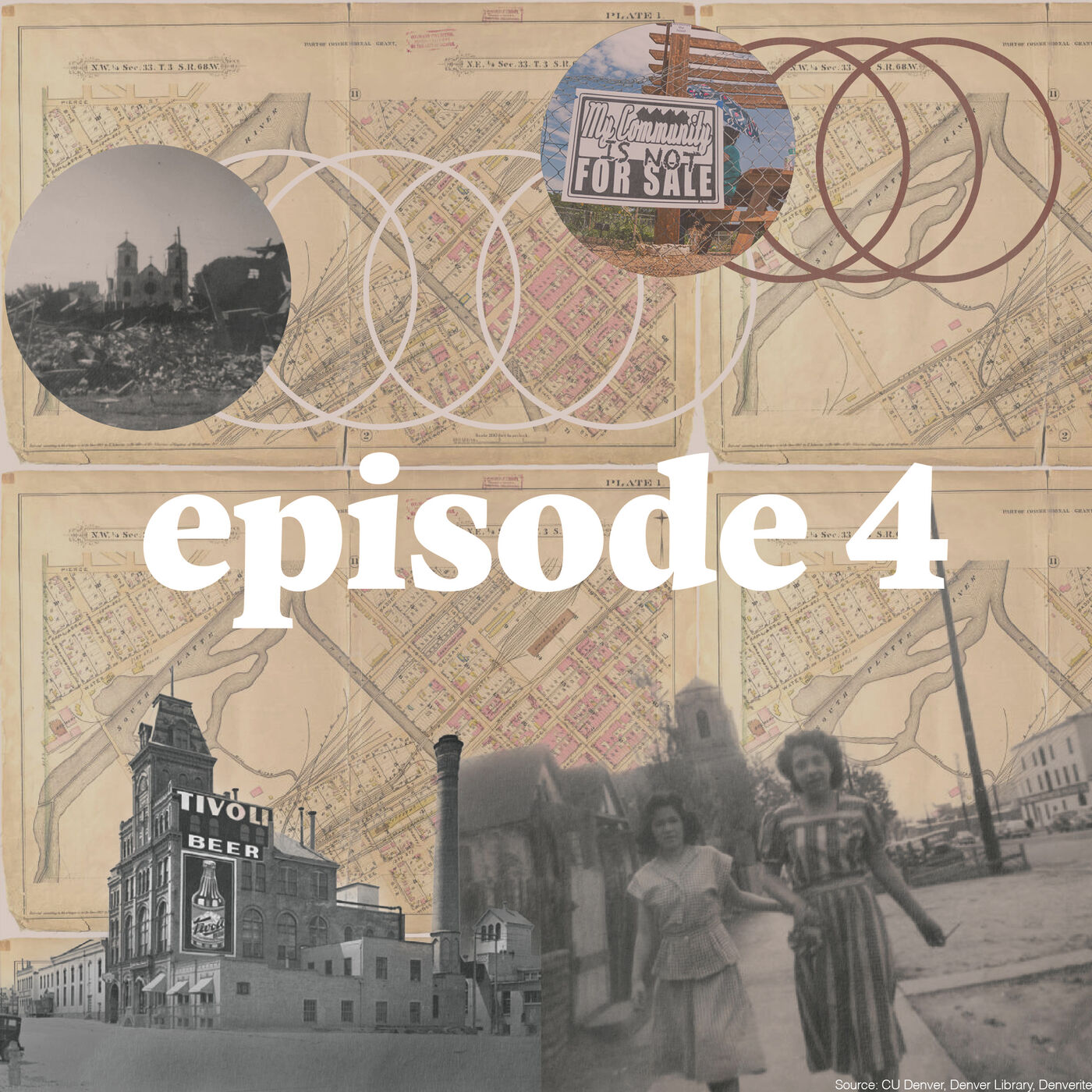Share

Urbanistory Podcast
E3: Filling in the Gaps with Ken Schroeppel
Ep. 3
•
This month, Camille and Maggie learn about the history and impact of infill projects in Downtown Denver from guest Ken Schroeppel. The group discusses the influences that spurred infill development near the city’s urban core as well as what can be down to increase housing density throughout Denver. Schroeppel is the Director of Urban Design at the University of Colorado Denver and the creator of DenverInfill, a blog providing news, ideas, and commentary about urban development in the Mile High City.
References:
DenverInfill and DenverUrbanism blogs
More episodes
View all episodes

5. E5: An Introduction to Trauma-Informed Design
30:59This month, Camille and Maggie discuss Trauma-Informed Design with Reverend Laura Rossbert. Unlike Jeremy Bentham’s Panopticon, this design approach focuses on incorporating user input and best practices to create safe, supportive spaces for people who undergo traumatic life experiences. Resources: Trauma-informed Design Society The Panopticon
4. E4: The Displacement and Dispersal of West Side Residents
26:06Camille and Maggie discuss social infrastructure and the history of the Auraria Neighborhood with community organizer Milo Marquez. Marquez is a 5th-generation Denver native whose work focuses on advocating for the Latino community across Colorado. In this episode, he discusses the relationship between gentrification and neighborhood displacement, and how these forces have negatively impacted Latino families in Denver.
2. E2: Can Your Neighborhood Make You Sick?
26:18Camille and Maggie explore the intersection of urban planning and public health with guest Jeremy Németh. Dr. Németh is a professor of Urban and Regional Planning and the Director of the PhD program in Geography, Planning, and Design at the University of Colorado Denver. He breaks down the history of redlining in the United States and the effect it has on neighborhood health and individual wealth. Jeremy’s website and referenced research: Németh, J. and Rowan, S. (2020). Is your neighborhood raising your coronavirus risk? Redlining decades ago set communities up for greater danger. The Conversation, May 26. Other sources: Grantz, K. H., Rane, M. S., Salje, H., Glass, G. E., Schachterle, S. E., & Cummings, D. A. (2016). Disparities in influenza mortality and transmission related to sociodemographic factors within Chicago in the pandemic of 1918. Proceedings of the National Academy of Sciences, 113(48), 13839–13844. https://doi.org/10.1073/pnas.1612838113 https://rajchetty.com/publications/
1. E1: Being in a Public Space
21:37In the inaugural episode of Urbanistory, Maggie and Camille share urban history research connected to the idea of being in a public space. Camille discusses "Public Space Beautification for Whom?" and Maggie contributes "How Did We Get Here? An Exploration of How People Move Through Cities." Works Cited URBANISTORY—EPISODE 1: BEING IN PUBLIC SPACE Music by www.bensound.com Camille Pahl: Public Space Beautification for Whom? Boyer, M.C. (1983). In search of a spatial order. Dreaming the Rational City: The Myth of American City Planning. Cambridge, MA: The MIT Press, pp. 33-56. Denver Parks and Recreation and Mundus Bishop Design, Inc. (2005). Denver's Civic Center Park Master Plan: Civic Center History. pp. 5-32. Hall, P. (2002). City of monuments (excerpt). In Cities of Tomorrow. Cambridge, MA: Wiley Blackwell, pp. 189-197. Larson, E. (2003). The Devil in the White City: Murder, magic, and madness at the fair that changed America. Vintage Books. Németh, Jeremy (2021, Sept. 21). Week 5: City Beautiful [Lecture Presentation]. Planning History and Theory, University of Colorado Denver, Denver, CO, United States. Wilson, W. (1989). The glory, destruction, and meaning of the City Beautiful movement. The City Beautiful Movement, Baltimore: The Johns Hopkins University Press, pp. 281-305. Maggie Squyer: How Did We Get Here? An Exploration of How People Move Through Cities Carrington, D. (2020, October 14). Study reveals world’s most walkable cities. The Guardian. Retrieved December 7, 2021, from https://www.theguardian.com/cities/20... worlds-most-walkable-cities. City and County of Denver Department of Transportation and Infrastructure. Denver moves everyone 2050. Retrieved December 9, 2021, from https://denvermoveseveryone.com/. Hall, P. (2002). The city in the garden. In Cities of Tomorrow (3rd edition). Oxford: Blackwell Publishing, pp. 88-141. HarvardX. (2017, April 19). Jon Snow and the 1854 Broad Street cholera outbreak [video]. Youtube. https://www.youtube.com/watch?v=lNjrA... Németh, Jeremy (2021, Oct. 5). Week 7: City Practical [Lecture Presentation]. Planning History and Theory, University of Colorado Denver, Denver, CO, United States.